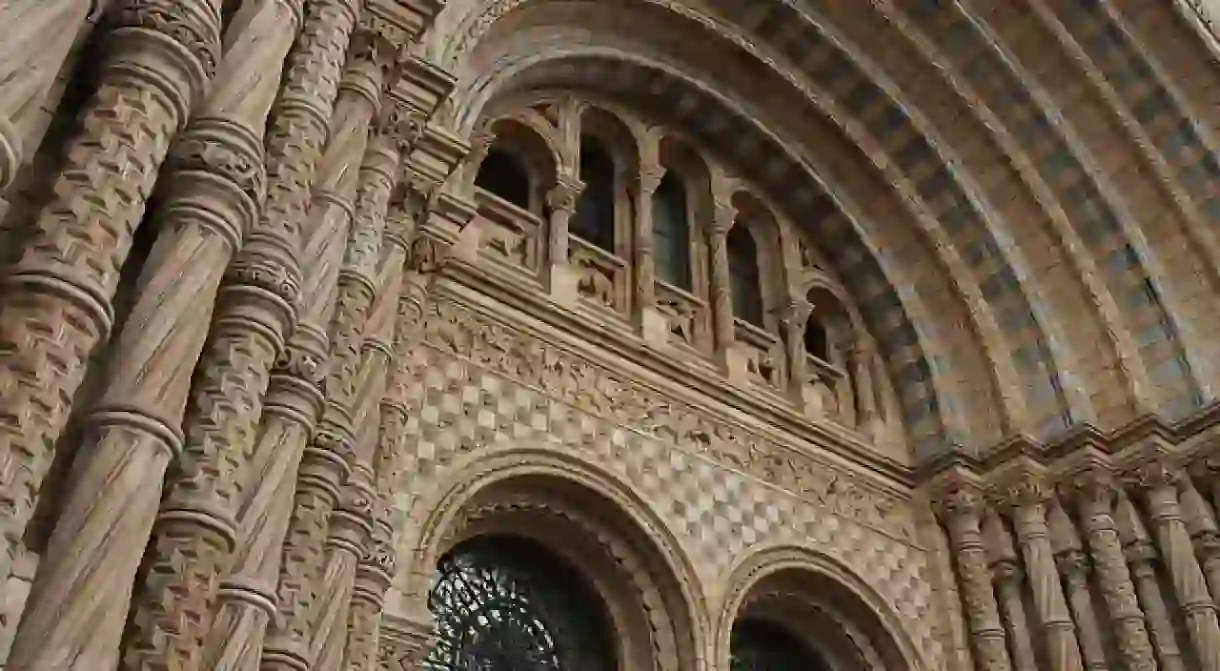London’s Most Iconic Doors, Right On Your Doorstep

Exploring London by walking is the best way to find the hidden delights. The doors of London tell their own tale, from street art to important sites of British heritage. Step inside and be inspired by these gateways to London, both from the past and present.

The Community Art Project
Building

The coin-encrusted door of Oliver House, Moorgate, has puzzled tourists and Londoners alike for at least a decade. The disused office building features a wide array of 1p and 2p coins affixed to its boarded-up wooden door, filling every inch of available space. The decoration seemed destined to remain a mystery until a curious photographer emailed an address scrawled upon the letterbox; eventually, an enigmatic response from a community leader explained that the site is used as a squat, and the residents created a ‘project towards the outside world, which is very different to the inside’.
The Monument to Local History
Building

In 1938, Walter Gilbert’s carved mahogany door for the Cornhill Insurance Group’s headquarters was revealed. A member of the Arts and Crafts movement, Gilbert was also responsible for the gates of Buckingham Palace; another door of sorts which deserves a visit. The eight panels depict notable scenes from the history of the Cornhill district, from Renaissance coffee houses to a visit by the Brontë sisters to their London publisher in 1848. The carvings offer a visual history of the development of the thriving ward of Cornhill.
The Cryptic Crypt
Building, Cemetery, Cathedral

Brompton Cemetery is one of those belonging to the ‘Magnificent Seven’ group, a collection of cemeteries built in the 19th century to alleviate pressure on overcrowded inner-city churchyards. One of the oldest cemeteries in London, the names on its tombstones provided inspiration for Beatrix Potter, a nearby resident. The door for the northeast entrance to its catacombs features an elaborately cast snake eating its own tail; the Greek ouroboros symbol, which represents the cyclical nature of life and the promise of resurrection. Both are apt connotations for a catacomb door.
The Oldest Specimen
Building

Recently, Westminster Abbey announced that through scientific dating the door of the Chapter House had been confirmed as the oldest door in Britain. It is likely it was installed in 1015, and carved from oak just outside of London, when Edward the Confessor built the Abbey. Traces of skin were found underneath the iron clasps of the door that, according to urban legend, were the remnants of the flesh of monks punished for robbing the nearby treasury; it is more likely this was from cattle hide used during the carpentry process. The Abbey has declared the door will not be placed in a glass case or away from public view as it acts as a historical time capsule to an era when England was very different to what it is today.
The Cultural Shrine
Museum, Park, Shrine

Richard Curtis’ Notting Hill was the highest grossing film of 1999, and the sites associated with its romantic tale of bafflement have endured as pilgrimages for devotees of both Hugh Grant and British film in general. The iconic blue door was actually removed and auctioned for charity, but the doorway of its replacement is never empty as fans flock regardless. The cultural impact of Notting Hill upon public perception of the district and the institution of the British ‘rom-com’ cannot be understated, and the power of the door remains impressive.
The Cathedral of Nature
Building, Museum

Alfred Waterhouse’s Romanesque structure of the Natural History Museum has stood as a beacon for natural history since 1881. Its towering doorway features a relatively modest set of wooden doors, but the carvings of a veritable zoo of exotic creatures immediately demonstrates that this is no ordinary building. Kangaroos and monkeys peek around every corner, while lions, tigers and bears peer at the visitors approaching from below. Through this playfulness, the doorway manages to avoid being terribly imposing.
The British Heritage Site
Museum
No list of impressive doors in London would be complete without a nod to 10 Downing Street. The official home of the Prime Minister, and the executive headquarters of the British Government, the Georgian house was completed in around 1772, and is actually three houses combined. The original black door is now on display in the Churchill Museum, as it was replaced with an identical version made from reinforced steel after an IRA attack in 1991. The door’s iconic status has been cemented by its integral role as the metaphorical home of British politics.













